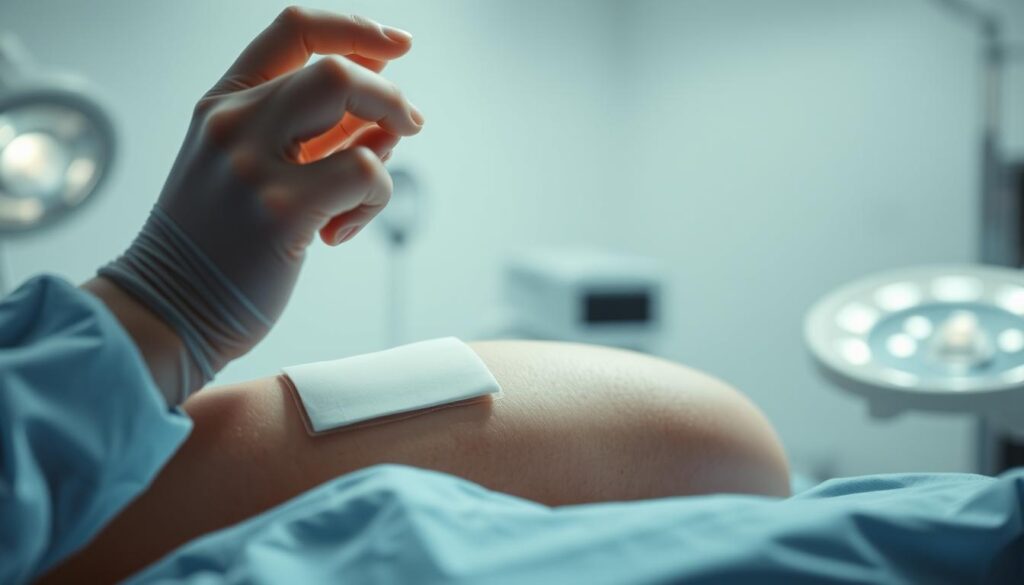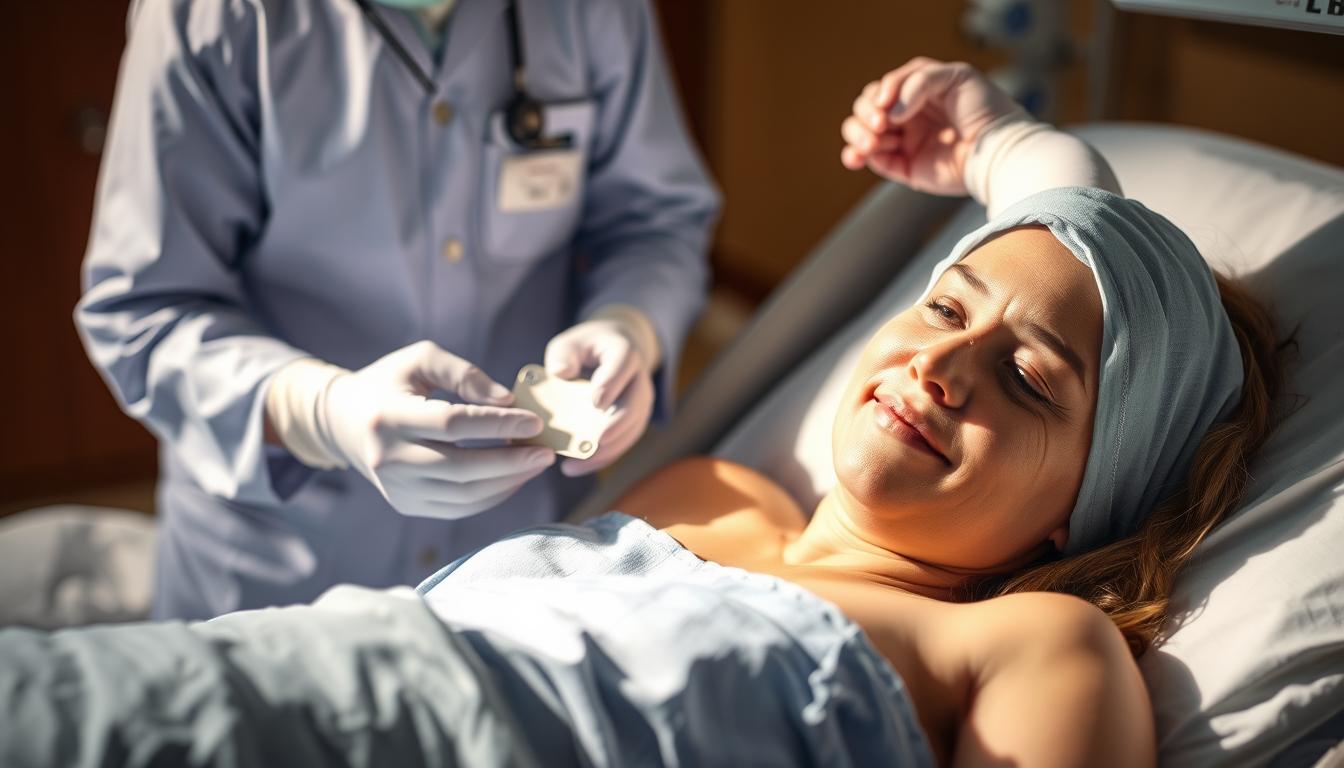After undergoing surgery to remove orthopedic hardware like metal screws or plates, patients often wonder about the recovery time. It’s natural to experience some pain and swelling around the incision site, which typically improves within a few days.
The recovery timeline varies significantly based on factors such as the location of the hardware, the complexity of the removal procedure, and individual patient factors. Understanding this timeline is crucial for patients to prepare mentally and physically for the healing process.
Most patients experience gradual improvement in comfort and function as the bone heals. This comprehensive guide will walk you through each stage of recovery, from immediate post-operative care to returning to normal activities.
Key Takeaways
- Plate removal involves extracting metal hardware previously implanted to stabilize fractured bones.
- Recovery time varies based on hardware location, procedure complexity, and patient factors.
- Understanding the recovery timeline helps patients set realistic expectations.
- Gradual improvement in comfort and function is expected as the bone heals.
- Proper post-surgical care significantly impacts recovery and reduces complication risks.
What to Expect After Plate Removal Surgery
Knowing what to expect after plate removal surgery can significantly ease the recovery process. The period following the surgery is critical for healing and requires careful management.
Immediate Post-Surgery Experience
Immediately after plate removal surgery, patients typically experience significant discomfort, swelling, and limited mobility. This initial phase is crucial as the body begins the healing process. The surgical area is tender and requires protection to prevent complications.
Typical Recovery Timeline
The recovery timeline after plate removal surgery is progressive, with distinct phases and healing milestones. Initially, patients experience discomfort and swelling that gradually subsides over the first few weeks.
- Days 1-3: Significant discomfort and swelling
- Days 4-7: Pain and swelling begin to subside
- Weeks 1-2: Incision begins healing, though the bone remains vulnerable
- Weeks 3-6: Screw holes in the bone gradually fill in, but the risk of fracture remains higher
- Week 6 and beyond: Gradual return to normal activities as the bone regains strength
The exact recovery time varies based on factors such as age, overall health, and the extent of the hardware removed. It’s essential to follow post-operative instructions carefully to ensure proper healing and minimize the risk of complications.
| Recovery Phase | Timeline | Key Milestones |
|---|---|---|
| Initial Healing | Days 1-3 | Significant discomfort, swelling, and limited mobility |
| Early Recovery | Days 4-7 | Pain and swelling subside, surgical area remains tender |
| Bone Healing | Weeks 3-6 | Screw holes fill in, bone remains vulnerable to fracture |
| Advanced Recovery | Week 6 and beyond | Gradual return to normal activities, bone regains strength |
Managing Pain During Plate Removal Surgery Recovery Time

Effective pain management strategies are essential for a smooth recovery after plate removal surgery. Managing pain effectively helps patients recover more comfortably and return to their normal activities sooner.
Pain Medication Guidelines
Pain medication is often prescribed to manage post-surgery discomfort. It’s crucial to follow the guidelines provided by your healthcare provider to ensure safe and effective use of these medications.
Non-Medication Pain Management Techniques
Several non-medication approaches can complement pain management. Elevating the surgical area above heart level reduces swelling and associated pain. Applying ice for 15-20 minutes several times a day helps minimize inflammation. Gentle movement of surrounding joints, as approved by your surgeon, prevents stiffness. Techniques like deep breathing, meditation, and distraction can also help manage pain by reducing tension and shifting focus away from discomfort.
| Technique | Description | Benefit |
|---|---|---|
| Elevation | Keep the surgical area above heart level | Reduces swelling and pain |
| Ice Therapy | Apply ice packs for 15-20 minutes | Minimizes inflammation and numbs the area |
| Gentle Movement | Move surrounding joints as approved by your surgeon | Prevents stiffness |
Caring for Your Surgical Site

Proper care of your surgical site is crucial for a smooth recovery after plate removal surgery, directly impacting your overall health. This involves following specific guidelines to ensure your wound heals correctly and minimize the risk of complications.
Dressing and Wound Care
Following your healthcare provider’s instructions on dressing and wound care is essential. Typically, this involves keeping the dressing clean and dry, and changing it as directed. It’s also important to monitor the wound for any signs of issues.
Monitoring for Signs of Complications
While complications after plate removal surgery are uncommon, being aware of the warning signs is crucial. Watch for increasing redness, warmth, or swelling around the incision site, which may indicate an infection. A fever above 101.5°F (38.6°C), especially with incision site changes, warrants immediate contact with your healthcare provider. Other signs that require medical attention include excessive bleeding or drainage, severe pain not controlled by prescribed medications, numbness or tingling, and unusual opening of the incision or visible hardware. If you notice any of these problems, don’t hesitate to reach out to your healthcare provider.
Activity Restrictions and Recommendations
Understanding the activity restrictions and recommendations after plate removal surgery is vital for a smooth recovery. The post-operative period involves a gradual return to normal activities, with specific guidelines to follow for optimal healing.
First Few Days After Surgery
Immediately after surgery, it’s essential to rest and avoid strenuous activities. Patients should limit their movements to prevent discomfort and promote healing. For more detailed aftercare information, patients can refer to resources such as MyHealth.Alberta.ca.
Weeks 1-2 of Recovery
During the initial two weeks, patients should continue to avoid heavy lifting, bending, or strenuous activities. Gentle movements and short walks are encouraged to prevent stiffness and promote circulation. It’s crucial to follow the surgeon’s specific instructions regarding activity levels.
Weeks 3-6 of Recovery
Critical Healing Period: Weeks 3-6 represent a critical healing phase where the bone starts to fill in the voids left by the removed screws and plates. Patients should continue to avoid high-impact activities like running or jumping, as there’s still a risk of fracture. Gradually increasing activity levels, as advised by the surgeon, is recommended. Weight-bearing restrictions may ease during this period, based on x-ray evidence of bone healing. Many patients return to work, though job modifications might be necessary for physically demanding roles. Physical therapy may be introduced to restore strength and function to the affected area.
Returning to Normal Life
As you progress through your recovery, you’ll be eager to return to your normal life, including driving, working, and engaging in physical activities. Your healthcare provider will guide you through this process, ensuring that you’re healing properly and safely resuming your daily routines.
When You Can Drive Again
You can typically resume driving when you’ve stopped taking narcotic pain medication and have regained sufficient strength and mobility in your body to operate a vehicle safely. This usually occurs within a few days to a week after surgery.
Returning to Work Guidelines
The timeline for returning to work varies depending on your job’s physical demands and your individual healing progress. Most people can return to desk jobs within 1-2 weeks, while those with more physically demanding jobs may need 6-12 weeks or more.
Resuming Physical Activities and Exercise
When resuming activities, it’s essential to follow a gradual, phased approach to protect the healing bone. Low-impact activities like walking and swimming are usually introduced first, with strength training and high-impact activity following later.
| Activity Level | Timeline |
|---|---|
| Low-impact activities (walking, swimming) | Typically introduced first, once cleared by your doctor |
| Strength training | Begins with light resistance, gradually increasing as the bone heals |
| High-impact activities and contact sports | Often restricted for 3-6 months, depending on the bone involved and individual healing |
When to Contact Your Healthcare Provider
Understanding the signs that require immediate medical attention is vital after plate removal surgery. While some discomfort is expected, certain symptoms warrant a call to your healthcare provider.
If you experience a fever over 101.5°F, it may indicate an infection. Increasing pain not controlled by medication, or signs of infection at the incision site such as excessive redness, warmth, swelling, or drainage, are also red flags.
- Unusual opening of the wound or visible hardware
- Numbness, tingling, or color changes in the extremity beyond the surgical site
- Persistent nausea, vomiting, or inability to tolerate food and fluids
These could signal problems that require prompt medical assessment. In case of severe symptoms like chest pain or difficulty breathing, seek immediate medical attention.
| Symptom | Possible Indication |
|---|---|
| Fever over 101.5°F | Infection |
| Increasing pain | Complication |
| Excessive redness, warmth, swelling, or drainage from the incision site | Infection |
Conclusion
Plate removal surgery marks the beginning of a recovery journey that requires patience and adherence to medical guidance. The timeline for complete recovery varies based on individual factors, but most patients can expect a return to normal activities within 6-12 weeks. Following your surgeon’s specific instructions regarding wound care, activity restrictions, and pain management optimizes your healing potential. With proper care and patience, most patients achieve excellent outcomes following plate removal surgery.


